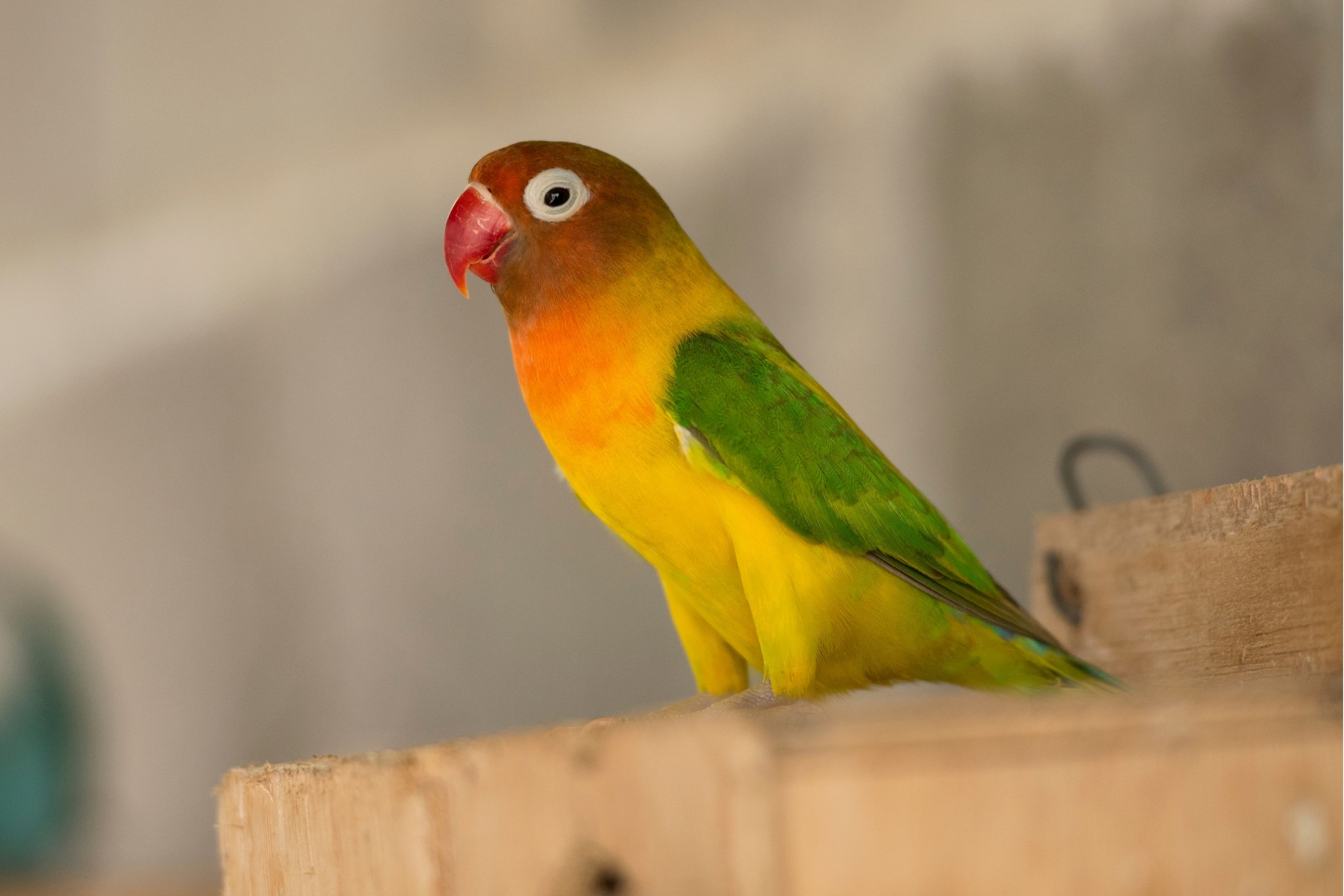Fischer's lovebird
(Agapornis fischeri)

Description
Fischer's lovebird (Agapornis fischeri) is a small parrot species of the genus Agapornis. They were originally discovered in the late 19th century. They are named after German explorer Gustav Fischer. The Fischer's lovebird has a green back, chest, and wings. Their necks are a golden yellow and as it progresses upward it becomes darker orange. The top of the head is olive green, and the beak is bright red. The upper surface of the tail has some purple or blue feathers. It has a white circle of bare skin (eye-ring) around its eyes. Young birds are very similar to the adults, except for the fact that they are duller and the base of their mandible has brown markings. They are one of the smaller lovebirds, about 14 cm (5.5 in) in length and 43-58g weight. While most Fischer's lovebirds are green, several color variations have been bred. The blue variation is predominant; lacking yellow, it has a bright blue back, tail, and chest, a white neck, a pale grey head and a pale pink beak. This mutation was first bred by R. Horsham in South Africa in 1957. There is a yellow lutino mutation, which first appeared in France. These birds are typically pale yellow with an orange face and a red beak. Further mutations are pied, black or dark eyed white, cinnamon, white, and albino mutations that have also been bred. Fischer's lovebird are native to a small area of east-central Africa, south and southeast of Lake Victoria in northern Tanzania. In drought years, some birds move west into Rwanda and Burundi seeking moister conditions. They live at elevations of 1,100-2,200m (3,600-7,200ft) in small flocks. They live in isolated clumps of trees with grass plains between them. The population is estimated to be between 290,000 and 1,000,000, with low densities outside of protected areas due to capture for the pet trade; export licenses were suspended in 1992 to halt any further decline in the species. Although they have been observed in the wild in Puerto Rico and Florida, they are probably the result of escaped pets, and no reproduction has been recorded.. Around 100 mating pairs can be found in the wild between Porches and Armacao de Pera and Lagoa area in the Algarve region of Portugal. They have also been observed in the U.S. Virgin Islands.
Taxonomic tree:







